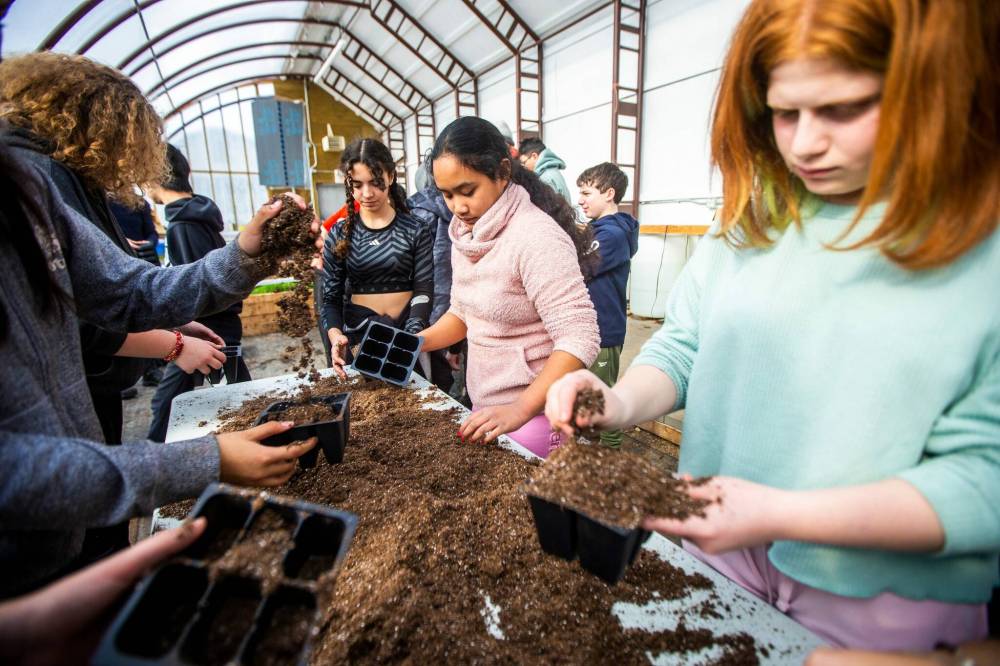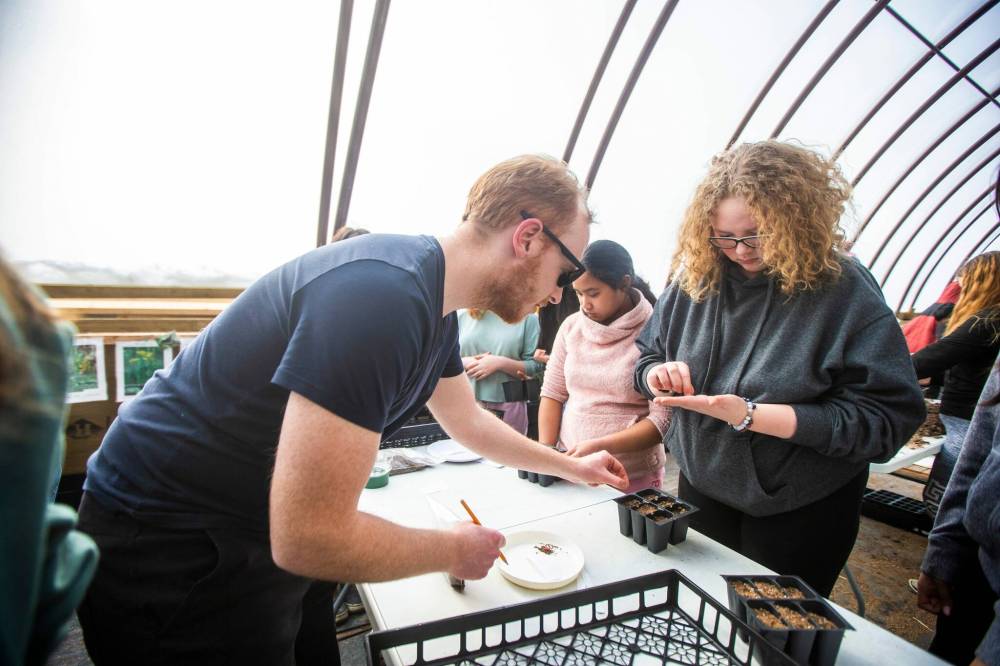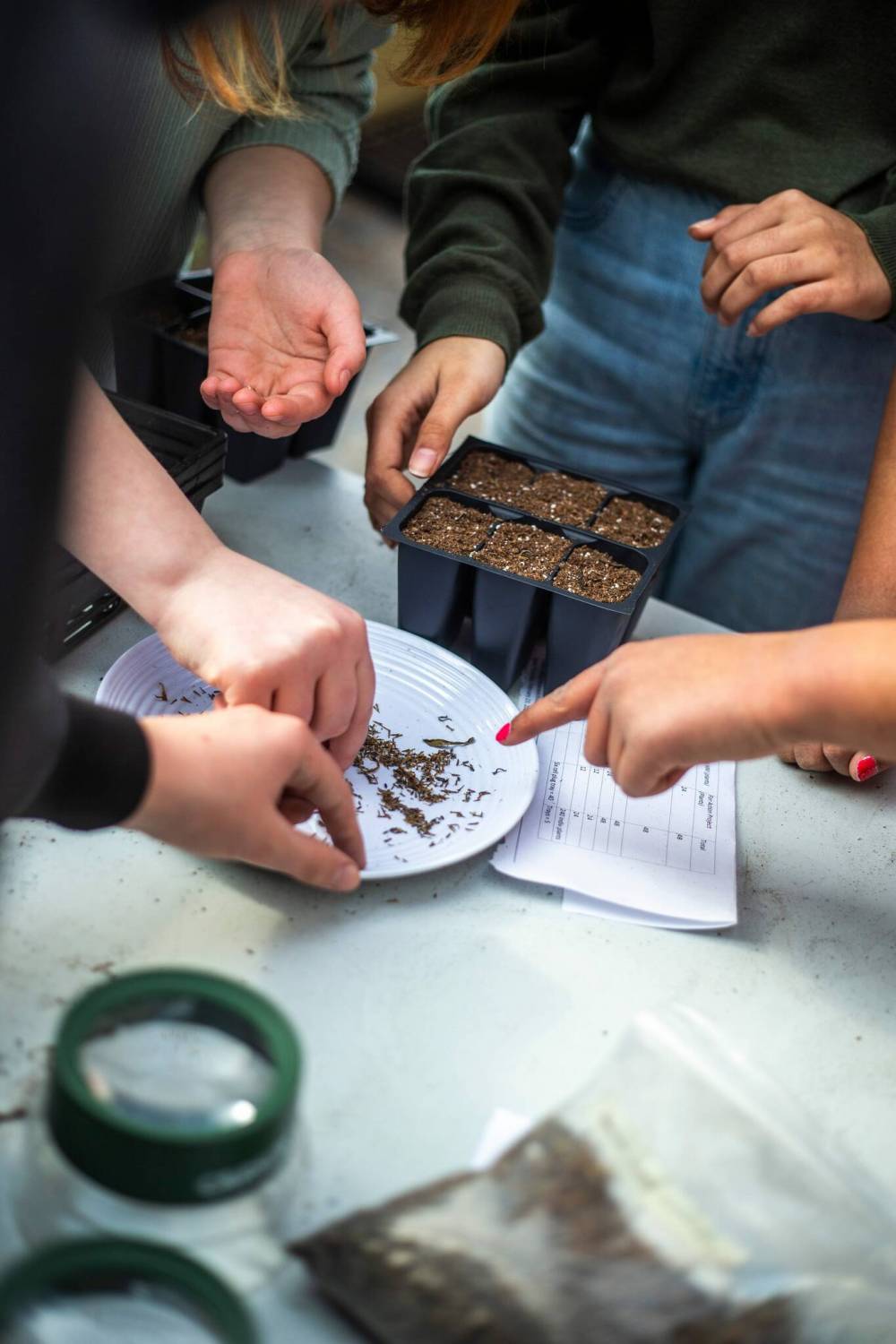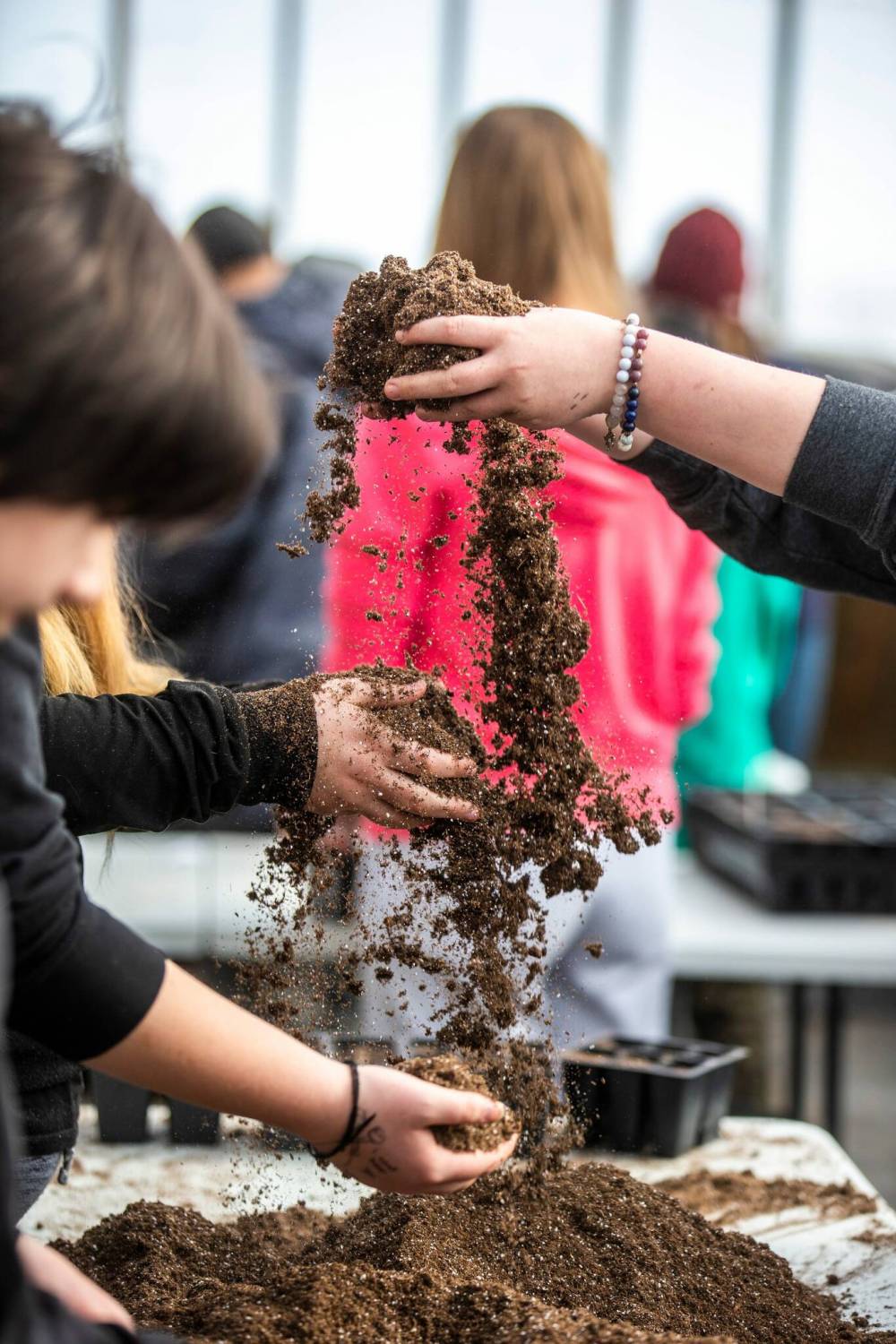Planting hope for the future
Students take part in project-based learning with saving environment at top of mind
Advertisement
Read this article for free:
or
Already have an account? Log in here »
To continue reading, please subscribe:
Monthly Digital Subscription
$0 for the first 4 weeks*
- Enjoy unlimited reading on winnipegfreepress.com
- Read the E-Edition, our digital replica newspaper
- Access News Break, our award-winning app
- Play interactive puzzles
*No charge for 4 weeks then price increases to the regular rate of $19.00 plus GST every four weeks. Offer available to new and qualified returning subscribers only. Cancel any time.
Monthly Digital Subscription
$4.75/week*
- Enjoy unlimited reading on winnipegfreepress.com
- Read the E-Edition, our digital replica newspaper
- Access News Break, our award-winning app
- Play interactive puzzles
*Billed as $19 plus GST every four weeks. Cancel any time.
To continue reading, please subscribe:
Add Free Press access to your Brandon Sun subscription for only an additional
$1 for the first 4 weeks*
*Your next subscription payment will increase by $1.00 and you will be charged $16.99 plus GST for four weeks. After four weeks, your payment will increase to $23.99 plus GST every four weeks.
Read unlimited articles for free today:
or
Already have an account? Log in here »
Hey there, time traveller!
This article was published 06/03/2023 (985 days ago), so information in it may no longer be current.
The creators of a new climate change curriculum want to help their teacher colleagues overcome personal fears about the planet’s future and learn how to educate students on the subject in a way that empowers them to take action.
“It’s tough to teach about something that’s really distressing,” said Scott Durling, a Grade 6-8 teacher in Winnipeg who is developing lesson plans on ecoanxiety.
“A lot of people experience apathy, where it’s just like, ‘Eh, I don’t really know what to do so I’m not going to do anything’ — because it’s so paralyzing.”
MIKAELA MACKENZIE / WINNIPEG FREE PRESS Middle-schoolers took a trip to their school division’s land-based learning facility to learn more about the indigenous plants native to West St. Paul before farming practices wiped them out and degraded the soil on which the Aki Centre sits.
The harms human consumption and growing carbon emissions are having on the environment, and the changes forecasted as a result of them, are increasingly taking a mental health toll on children and youth.
In response, H.C. Avery Middle School and Green Minds, a local group of psychologists and researchers interested in social justice issues, have partnered to support the expansion of climate change education that takes staff and student well-being into account.
The school is undertaking the pilot, which involves both the implementation of cross-curricular assignments in 10 different classrooms and a study of student responses to uncomfortable content, with a $70,000 grant via Manitoba’s Teachers’ Idea Fund.
Durling is facilitating project-based learning, ranging from one class’ probe into how cities can be designed to eliminate garbage to another’s examination of “degrowth economies” that are challenging excessive consumerism.
The connection between plants and air quality, sustainability in a pre-colonization context, and conservation efforts on the Prairies are among the other topics being explored by students.
Middle-schoolers took a trip to their school division’s land-based learning facility Thursday to learn more about the indigenous plants native to West St. Paul before farming practices wiped them out and degraded the soil on which the Aki Centre sits.
MIKAELA MACKENZIE / WINNIPEG FREE PRESS Teacher Scott Durling and Grade 8 student Veronica Krechler plant seeds.
Grades 6, 7 and 8 students spent the afternoon rolling up their sleeves to sprinkle fistfuls of soil into seed germination trays and plant tiny specks of purple prairie clover, narrow leaf sunflower and heartland alexander.
“(These species’) root systems are really big and they hold a lot of water. They can survive droughts longer than other plants, and a lot of animals and other plant species rely on them. They also hold a lot of carbon so they’re good for the environment,” said Pari Dagar, 12, as she dug through a pile of dirt.
The trays were later transported — from the muggy greenhouse outside the Perimeter Highway to their Garden City-area school — so Pari and her peers can create a tallgrass prairie garden of their own. In the coming weeks, students will venture into their community to help neighbours build model tallgrass prairies.
Durling said he wants his students to understand how colonization and industrialization led to there being too much carbon in the atmosphere and created inequality across society, while also showing them practical ways to reverse the damages on a local level.
MIKAELA MACKENZIE / WINNIPEG FREE PRESS Students spent the afternoon rolling up their sleeves to sprinkle fistfuls of soil into seed germination trays and plant tiny specks of purple prairie clover, narrow leaf sunflower and heartland alexander.
“The message that we want kids to have is that it does feel doomy and gloomy, but there’s lots of stuff that we can do that can help us feel better and also help our communities feel better,” he said, noting the staff at the Aki Centre, who are engaged in restoration and have seen species return to the area as a result, are a testament to the progress that can be made.
Sixty-seven per cent of Canadians think K-12 schools need to place a higher priority on climate change education, according to a 2022 poll conducted by Learning for a Sustainable Future, a national charity that promotes sustainability education.
The findings also show 35 per cent of teachers across the country are not covering topics related to climate change in their classrooms or did not find them applicable to their teaching.
Rhéa Rocque of Green Minds said H.C Avery is an outlier in many of its teachers are actively engaging in discussions about rising global temperatures.
MIKAELA MACKENZIE / WINNIPEG FREE PRESS “The message that we want kids to have is that it does feel doomy and gloomy, but there’s lots of stuff that we can do that can help us feel better and also help our communities feel better,” Durling said.
Limited resources on climate change education and the overwhelming subject matter are barriers for many, said Rocque, who works at the Prairie Climate Centre in Winnipeg and studies climate change psychology.
The researcher said her team is seeking out evidence-based practices to make educators feel comfortable introducing the climate crisis into their classrooms, no matter their base knowledge of it, and using strategies to manage the uncomfortable emotions associated with it.
Asked about how climate change makes her feel, Grade 6 student Mia Kravets said she worries about how much she will have to adapt in the future because of rising temperatures. The 11-year-old noted she has participated in protests in the past to express her concerns.
Mia and her classmates will be exposed to mindfulness, muscle relaxation, and breathing techniques to regulate their ecoanxiety over the coming months as part of the Green Minds project.
maggie.macintosh@freepress.mb.ca
Twitter: @macintoshmaggie

Maggie Macintosh
Education reporter
Maggie Macintosh reports on education for the Free Press. Originally from Hamilton, Ont., she first reported for the Free Press in 2017. Read more about Maggie.
Funding for the Free Press education reporter comes from the Government of Canada through the Local Journalism Initiative.
Every piece of reporting Maggie produces is reviewed by an editing team before it is posted online or published in print — part of the Free Press‘s tradition, since 1872, of producing reliable independent journalism. Read more about Free Press’s history and mandate, and learn how our newsroom operates.
Our newsroom depends on a growing audience of readers to power our journalism. If you are not a paid reader, please consider becoming a subscriber.
Our newsroom depends on its audience of readers to power our journalism. Thank you for your support.




